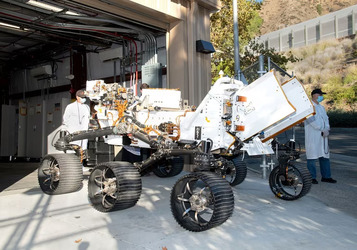The week's pick
Reseach Article
Designing Robust Machine Learning Model for Enhanced Human Activity Recognition
| Communications on Applied Electronics |
| Foundation of Computer Science (FCS), NY, USA |
| Volume 7 - Number 40 |
| Year of Publication: 2025 |
| Authors: Pradeep Kumar Sharma, Harsh Mathur |
 10.5120/cae2025652907
10.5120/cae2025652907
|
Pradeep Kumar Sharma, Harsh Mathur . Designing Robust Machine Learning Model for Enhanced Human Activity Recognition. Communications on Applied Electronics. 7, 40 ( May 2025), 27-38. DOI=10.5120/cae2025652907
Abstract
For health monitoring and fitness tracking, wearable computing, smart settings, and healthcare require effective human activity recognition (HAR). HAR systems must work in real time despite noisy sensor input, changing surroundings, and other obstacles. The Spatio-Temporal Attention-based Hybrid Neural Network (STAHNN) improves HAR task robustness and efficiency. STAHNN uses CNNs to extract spatial characteristics and RNNs to model temporal dependencies. Self-attention reduces noise by focusing on relevant spatiotemporal elements. Jittering and scaling promote generalization, whereas domain adaptation procedures reduce sensor variability and ensure performance. STAHNN outperforms other HAR techniques in noisy data management and activity pattern adaptation, according to extensive studies. STAHNN solves HAR problems scalable and robustly by bridging laboratory and real-world performance.
References
- R. Saeedi, S. Norgaard, and A. H. Gebremedhin, "A closed-loop deep learning architecture for robust activity recognition using wearable sensors," 2017 IEEE International Conference on Big Data (Big Data), Boston, MA, USA, 2017, pp. 473-479, doi: 10.1109/BigData.2017.8257960.
- V. Sumathi, D. Vanathi, J. C. Musale, T. V. S. Gowtham Prasad, and A. R. Singh, "Improved Pattern Recognition Techniques for Monitoring Human Activity Recognition in Digital Platforms through Image Processing Techniques," 2023 Second International Conference on Augmented Intelligence and Sustainable Systems (ICAISS), Trichy, India, 2023, pp. 866-871, doi: 10.1109/ICAISS58487.2023.10250478.
- S. R. SannasiChakravarthy et al., "Intelligent Recognition of Multimodal Human Activities for Personal Healthcare," IEEE Access, vol. 12, pp. 79776-79786, 2024, doi: 10.1109/ACCESS.2024.3405471.
- V. Dissanayake, S. Seneviratne, R. Rana, E. Wen, T. Kaluarachchi, and S. Nanayakkara, "SigRep: Toward Robust Wearable Emotion Recognition With Contrastive Representation Learning," IEEE Access, vol. 10, pp. 18105-18120, 2022, doi: 10.1109/ACCESS.2022.3149509.
- H. Brock, J. Ponce Chulani, L. Merino, D. Szapiro, and R. Gomez, "Developing a Lightweight Rock-Paper-Scissors Framework for Human-Robot Collaborative Gaming," IEEE Access, vol. 8, pp. 202958-202968, 2020, doi: 10.1109/ACCESS.2020.3033550.
- A. F. Gentile, D. Macrì, E. Greco, and A. Forestiero, "Privacy-Oriented Architecture for Building Automatic Voice Interaction Systems in Smart Environments in Disaster Recovery Scenarios," 2023 International Conference on Information and Communication Technologies for Disaster Management (ICT-DM), Cosenza, Italy, 2023, pp. 1-8, doi: 10.1109/ICT-DM58371.2023.10286949.
- Y. E. Marhraoui, O. Bounhar, M. Boukallel, M. Anastassova, S. Bouilland, and M. Ammi, "Dual-Stage Attention-Based model for rehabilitation activity recognition using data from wearable sensors," IEEE Internet of Things Journal, 2024, doi: 10.1109/JIOT.2024.3519225.
- J. -H. Li, L. Tian, H. Wang, Y. An, K. Wang and L. Yu, "Segmentation and Recognition of Basic and Transitional Activities for Continuous Physical Human Activity," in IEEE Access, vol. 7, pp. 42565-42576, 2019, doi: 10.1109/ACCESS.2019.2905575.
- 1. Bouthillier, X., Konda, K., Vincent, P., Memisevic, R.: Dropout as data augmentation (2016)
- 2. Cubuk, E.D., Zoph, B., Mane, D., Vasudevan, V., Le, Q.V.: Autoaugment: Learning augmentation strategies from data. In: Proceedings of the IEEE/CVF Conference on Computer Vision and Pattern Recognition (CVPR) (June 2019)
- 3. Feichtenhofer, C., Fan, H., Malik, J., He, K.: Slowfast networks for video recognition. In: Proceedings of the IEEE/CVF International Conference on Computer Vision (ICCV) (October 2019)
- 4. Singh, A., Chakaborty, O., Varshney, A., Panda, R., Feris, R., Senko, K., Das, A.: Semi- supervised action recognition with temporal contrastive learning. In: Proceedings of the IEEE/CVF Conference on Computer Vision and Pattern Recognition. pp. 10389–10399 (2021)
- 5. Sohn, K., Berthelot, D., Carlini, N., Zhang, Z., Zhang, H., Raffel, C.A., Cubuk, E.D., Kurakin, A., Li, C.L.: Fixmatch: Simplifying semi-supervised learning with consistency and confidence. Advances in neural information processing systems 33, 596–608 (2020)
- 6. Touvron, H., Cord, M., Douze, M., Massa, F., Sablayroles, A., Jégou, H.: Training dataefficient image transformers & distillation through attention. In: International conference on machine learning. pp. 11347–11357. PMLR (2021).
- Yang, C., Xu, Y., Dai, B., Zho, B.: Video representation learning with visual temporal consistency. arXiv preprint arXiv:2006.15599 (2020)
Index Terms
Keywords

